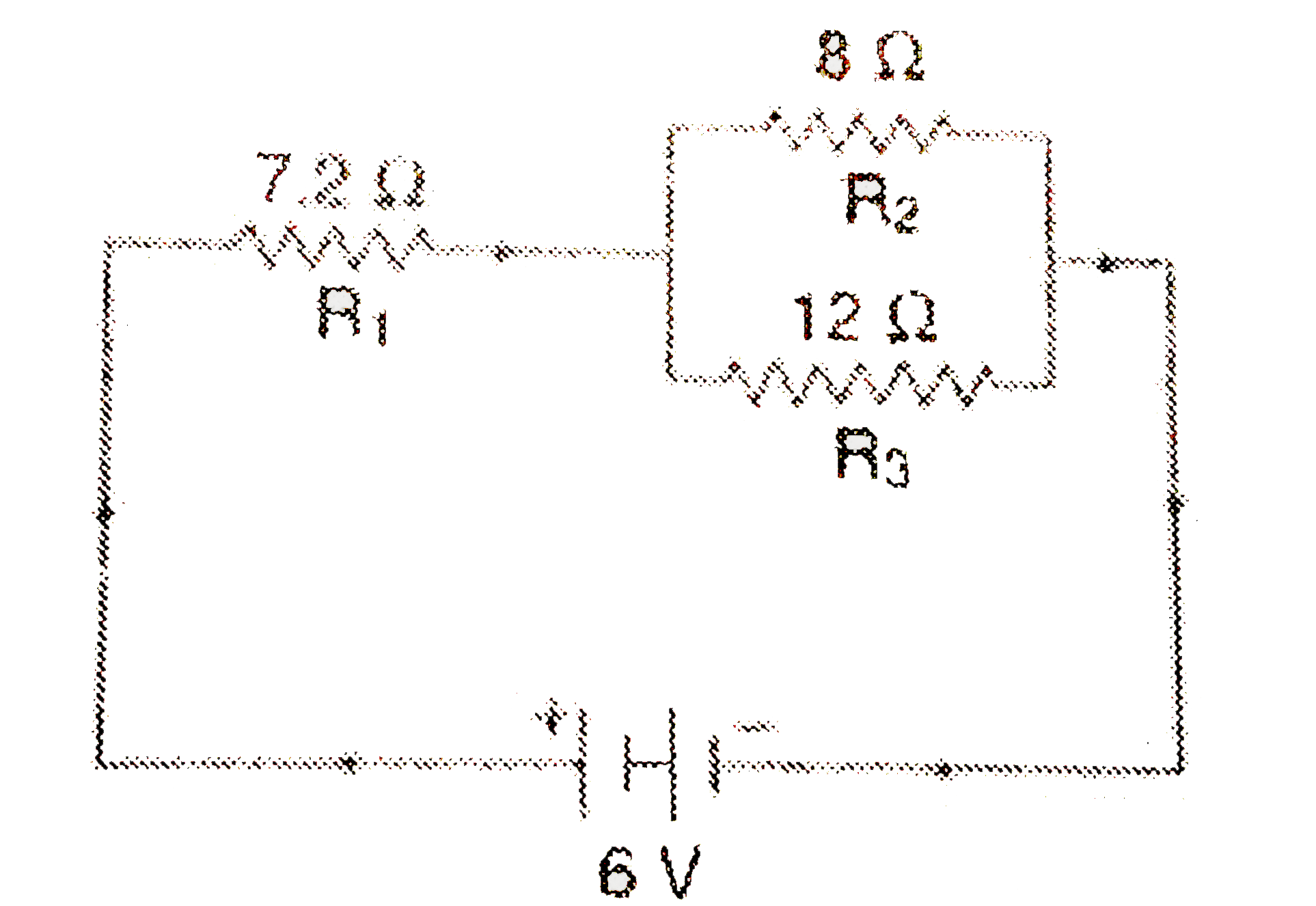Two resistances X and Y are connected turn by turn: (i) in parallel, and (ii) in series. In which case the resultant resistance will be less than either of the individual resistances?
The correct Answer is:In parallel
Step by step video, text & image solution for Two resistances X and Y are connected turn by turn: (i) in parallel, and (ii) in series. In which case the resultant resistance will be less than either of the individual resistances? by Physics experts to help you in doubts & scoring excellent marks in Class 10 exams.
Topper's Solved these Questions
- BOOK - LAKHMIR SINGH & MANJIT KAURCHAPTER - ELECTRICITY EXERCISE - Very Short Answer Type Questions1videos
ELECTRICITY
- BOOK - LAKHMIR SINGH & MANJIT KAURCHAPTER - ELECTRICITY EXERCISE - Short Answer Type Questions2videos
ELECTRICITY
- BOOK - LAKHMIR SINGH & MANJIT KAURCHAPTER - ELECTRICITY EXERCISE - Sample Problem1videos
ELECTRICITY
- BOOK - LAKHMIR SINGH & MANJIT KAURCHAPTER - MAGNETIC EFFECT OF ELECTRIC CURRENT EXERCISE - NCERT BOOK2videos
MAGNETIC EFFECT OF ELECTRIC CURRENT
Similar Questions
Explain with diagrams what is meant by the "series combination" and "parallel combination" of resistances. In which case the resultant resistance is: (i) less, and (ii) more, than either of the individual resistances?
View SolutionFind the resistance if all of these parts are connected in :
(a) Parallel
(b) SeriesView Solution
Knowledge Check
- Question 1 - Select One
Out of five resistance of RΩ each 3 are connected in parallel and are joined to the rest 2 in series. Find the resultant resistance.
A(3/7)RΩB(7/3)RΩC(7/8)RΩD(8/7)RΩ - Question 2 - Select One
Three resistances, each of 1 ohm , are joined in parallel. Three such combinations are put in series, then the resultant resistance will be
A9 ohmB3 ohmC1 ohmD13 ohm - Question 3 - Select One
Assertion : A resistance wire is broken into four pices and all are connected in parallel. Then, net resistance becomes 1/16 times.
Reason : In parallel net resistance is less than the smallest value of individual resistance.AIf both Assertion and Reason are true and Reason is the correct explanation of Assertion.BIf both Assertion and Reason are true and Reason is not correct explanation of Assertion.CIf Assertion is true but Reason is false.DIf Assertion is false but Reason is true.
(a) what is meant by series and parallel combination of resistances ?
(b) in which case, series combination or parallel combination, the combined resistance is less than any of the individual resistances ?
(c ) How should two resistance of 2Ω each be connected so as to produce an equivalent resistance of 1Ω ?
In the circuit diagram given here , find:
(i) total resistance of the circuit
(ii) total current flowing in the circuit, and
(iii) the potential difference across R1
 View Solution
View SolutionFour resistances of 16 ohms each are connected in parallel. Four such combinations are connected in series. What is the total resistance?
View SolutionThree resistors of resistances R1,R2andR3 are connected in (i) series and (ii) parallel. Write expression for the equivalent resistance of the combination in each case.
(b) Two identical resistance of 12Ω each are connected to a battery of 3V. Calculate the ratio of the power consumed by the resulting combinations with minimum resistance and maximum resistance.View SolutionIf four resistance, each of value 1 ohm, are connected in series, what will be the resultant resistance?
View SolutionTwo batteries each of E and internal resistance r are connected turn by turn in series and in parallel, and are used to find current in an external resistance R. If the current in series is equal to that in parallel, the internal resistance of each battery is
View Solution

